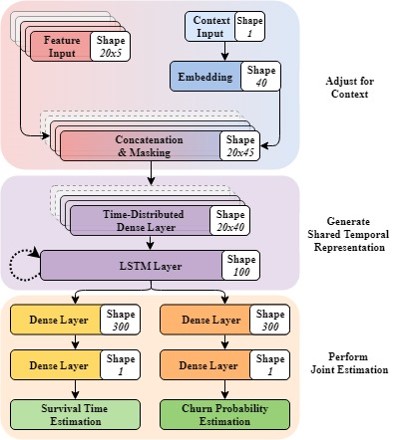Modelling Early User-Game Interactions for Joint Estimation of Survival Time and Churn Probability
Data-driven approaches which aim to identify and predict player engagement are becoming increasingly popular in games industry contexts. This is due to the growing practice of tracking and storing large volumes of in-game telemetries coupled with a desire to tailor the gaming experience to the end-user's needs. These approaches are particularly useful not just for companies adopting Game-as-a-Service (GaaS) models (e.g. for re-engagement strategies) but also for those working under persistent content-delivery regimes (e.g. for better audience targeting). A major challenge for the latter is to build engagement models of the user which are data-efficient, holistic and can generalize across multiple game titles and genres with minimal adjustments. This work leverages a theoretical framework rooted in engagement and behavioural science research for building a model able to estimate engagement-related behaviours employing only a minimal set of game-agnostic metrics. Through a series of experiments we show how, by modelling early user-game interactions, this approach can make joint estimates of long-term survival time and churn probability across several single-player games in a range of genres. The model proposed is very suitable for industry applications since it relies on a minimal set of metrics and observations, scales well with the number of users and is explicitly designed to work across a diverse range of titles.
PDF Abstract